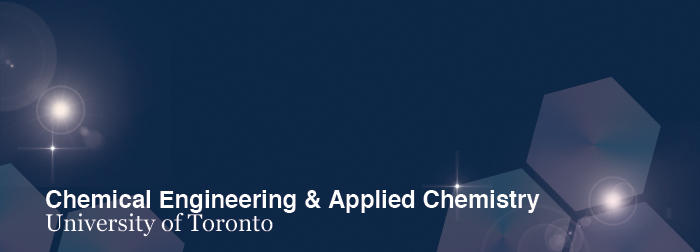

JANET ELLIOTT
University of Alberta
THERMODYNAMICS IN CRYOBIOLOGY: HOW MATH CAN SAVE KNEES
Cryobiology is the study of life at low temperatures. Cryopreservation (using temperatures down to that of liquid nitrogen at –196°C) is the only way to preserve long-term viability and function of mammalian cells for research and medical use. While cell and tissue engineers may not give cryobiology a second thought, developing cryopreservation procedures typically requires a significant portion of all cell therapy development resources and has been a main bottleneck in the clinical translation of some tissue engineered constructs.
While many cells in suspension are routinely cryopreserved and used clinically, or are available to purchase for research, many cell types and the vast majority of tissues cannot be adequately cryopreserved today. Thermodynamics (equilibrium and nonequilibrium) is the underlying physical science of cryobiology. Thermodynamics determines the freezing point of intra- and extracellular solutions, how much ice is formed at a given temperature, how cryoprotectants supress the formation of ice or mitigate its effects, and how ice interacts with cell and tissue structures. Thermodynamics describes the transport of water into and out of cells and across tissues in response to ice formation, the permeation and efflux of cryoprotectants during loading and unloading, and the transport of heat during cooling and rewarming.
Our collaborative, interdisciplinary research group allows students to do graduate work in engineering and medical sciences. Over the past 10 years, we have introduced an osmotic virial equation approach for multisolute solution thermodynamics in biology, improving thermodynamics and transport modeling in cryopreservation and leading to success in: a) cryopreserving human articular cartilage on bone with vitrifiable cryoprotectants, and b) cryopreserving blood stem cells without using cryoprotectants at all.
Date/Time |
Location 200 College Street Wallberg Building Room 116 |
Dr. Elliott will also give a seminar in the Department of Mechanical and Industrial Engineering on Friday April 1: "Thermodynamics of Drops".
 JANET ELLIOTT obtained her B.A.Sc. in Engineering Science (Engineering Physics Option) and her M.A.Sc. and Ph.D. in Mechanical Engineering at the University of Toronto. She has been a Visiting Professor at M.I.T. and at the Oxford Centre for Collaborative Applied Mathematics. Dr. Elliott's research interests include thermodynamics, surfaces and colloids, cryobiology and cryopreservation, and transport, and she has a passion for interdisciplinary collaborative research and training.
JANET ELLIOTT obtained her B.A.Sc. in Engineering Science (Engineering Physics Option) and her M.A.Sc. and Ph.D. in Mechanical Engineering at the University of Toronto. She has been a Visiting Professor at M.I.T. and at the Oxford Centre for Collaborative Applied Mathematics. Dr. Elliott's research interests include thermodynamics, surfaces and colloids, cryobiology and cryopreservation, and transport, and she has a passion for interdisciplinary collaborative research and training.
Dr. Elliott currently serves on the editorial board of the journal Cryobiology. She has served on scientific committees for international conferences in the areas of cryobiology, surfaces and colloids, and space physical sciences. She has served on grant selection committees for the Natural Sciences and Engineering Research Council (NSERC) of Canada, the Canadian Institutes of Health Research (CIHR) and the Canadian Space Agency (CSA). She has served as a member of the Physical Sciences Advisory Committee for the Canadian Space Agency and on the Board of Directors of the Canadian Society for Chemical Engineering.
Dr. Elliott's research has been recognized nationally in science and engineering by Fellowship in the Chemical Institute of Canada (2015), the Canadian Society for Chemical Engineering Syncrude Canada Innovation Award (2008), the Natural Sciences and Engineering Research Council Doctoral Prize (1998), the Canadian Council of Professional Engineers Young Engineer Achievement Award (2001), the Canadian Institute for Advanced Research Young Explorer's Prize (2002) and Time Magazine's Canadians Who Define the New Frontiers of Science (2002). Dr. Elliott has also received provincial and University awards including the University of Alberta Teaching Unit Award (2004). As one student put it, "She could convince rocks to study thermodynamics."
| For more info about this series: www.chem-eng.utoronto.ca |
Websites of Interest
- University of Toronto
- Faculty of Applied Science & Engineering
- Department of Chemical Engineering & Applied Chemistry
